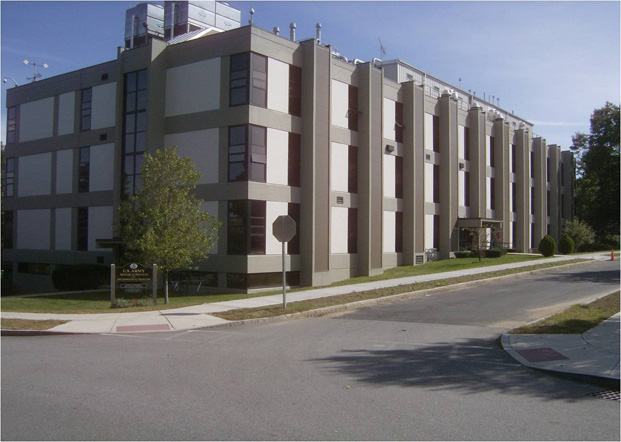USARIEM Celebrates 50 Years
The U.S. Army Research Institute of Environmental Medicine (USARIEM) in Natick, Mass., marks five decades of vital research in environmental medicine since 1961. We acknowledge this important milestone in the following retrospective, highlighting the Institute's resolve to improve Soldier health.
Mission
USARIEM's mission is to conduct basic and applied research to determine how exposure to extreme heat, severe cold, high-terrestrial altitude, occupational tasks, physical training, deployment operations and nutritional factors affect the health and performance of military personnel.
History
Recognizing the importance of environmental and operational contingencies for the health, performance and effectiveness of troops in training or combat, USARIEM was activated in 1961 as a research laboratory under the U.S. Army Medical Research and Development Command. The Institute was created from a composite of elements associated with a number of outstanding federal and academic laboratories, including:
- Harvard Fatigue Laboratory in Cambridge, Mass.
- Armored Medical Research Laboratory at Fort Knox, Ky.
- Climatic Research Laboratory in Lawrence, Mass.
- Quartermaster's Environmental Protection Research Division and Earth Sciences Division in Natick, Mass.
USARIEM's research focus in the early 1960s included effects of heat- and cold-induced stress and temperature regulation and effects of altitude exposure. In 1967, the Arctic Medical Research Laboratory at Fort Wainwright, Fairbanks, Alaska, was opened and specialized in research on frostbite, hypothermia and other injuries associated with cold weather military operations. The laboratory subsequently closed in 1978.
USARIEM moved to a permanent space of 76,000 square feet in 1968. This facility contains two altitude chambers (added in 1969), five biophysical evaluation chambers, a biomechanics laboratory, 13 environmental chambers and a water immersion laboratory. In 1978, USARIEM reorganized under missions -- altitude research, exercise physiology, heat research, health and performance, military ergonomics and experimental pathology (including cold research). USARIEM is currently organized into four research divisions: Biophysics and Biomedical Modeling, Military Nutrition, Military Performance, and Thermal and Mountain Medicine. The John T. Maher Memorial Altitude Research Facility at Pikes Peak, Colo., is also part of the USARIEM laboratory (see 'Research Highlight'), as is the USARIEM/Womack Medical Research Facility in Fort Bragg, NC.
Historical Highlight
USARIEM has long been recognized internationally as a Center of Excellence in environmental (climatic) physiology and occupational medicine. USARIEM personnel were consultants on the establishment of the Olympic Training Center in Colorado Springs, Colo.
Research Highlight: Pikes Peak Lab
The John T. Maher Memorial Altitude Research Facility, also known as the Pikes Peak Lab, is a medical research laboratory that assesses the impact of high altitude on human physiological and medical parameters of military interest. It is a satellite facility of USARIEM. The Pikes Peak Lab is at the summit of Pikes Peak (4,304 meters, or 14,110 feet) in central Colorado. The summit is approximately 5 acres of relatively flat, rocky terrain and is directly and easily accessible by automobile via the Pikes Peak Highway. The laboratory has been maintained by USARIEM since 1969 and has 2,267 square feet of floor space divided into a kitchen and dining/day room, common area/bathroom and shower, common area/sleeping quarters accommodating up to 16 research volunteers, a wet laboratory, a research area and a mechanical room housing steel storage tanks for water and sewage. The building is well insulated and protected from the elements, supplied with electrical power and heated by natural gas.
To learn more about USARIEM's research and products, visit http://www.usariem.army.mil.















